Table of contents
Peanuts ( Arachis hypogaea ) with the outer shell are mostly roasted, but without salt . Roasting gives them a very tasty aroma. If you buy peeled, roasted peanuts, they often contain a lot of salt.
Use in the kitchen
Peanuts are available raw, dried (dry), blanched, roasted, shelled or unpeeled, with or without salt.
Can you eat unshelled peanuts? If unshelled means the thin skin, then it is possible to eat peanuts with this skin. However, for some, the texture and taste of the papery skin is not pleasant and a little harder to digest. This skin is rich in antioxidants and phytochemicals, so eating peanuts with the skin is nutritionally more beneficial. 1
Roasted, unsalted peanuts taste good in muesli (eg in gluten-free Erb-Müesli or Erb-Müesli plus oat flakes ), in desserts such as pudding, cakes, cookies or other baked goods. Peanuts are often eaten as a snack roasted and salted or sugared, caramelized (burnt). The food industry often uses peanuts as an addition to sweets in the form of peanut butter and peanut oil .
Peanuts add a pleasant taste to spicy dishes such as soups, sauces, curries or Asian wok dishes (e.g. with vegetables such as spring onions, carrots, broccoli, peppers, zucchini, etc.).
However, since you should only eat a few peanuts a day, you can replace them with other, healthier nuts or at least mix them with them. Macadamia nuts and almonds have a similar consistency. You can put together your own mixes withpumpkin seeds, linseed and other seeds and kernels to suit your taste.
Vegan recipe for Thai cucumbers with roasted peanuts
Ingredients (4 people): 2 cucumbers (organic), 60 g peanuts (raw), 60 g coriander leaves ; for the dressing: 2 tbsp rapeseed oil, 2 tbsp lime juice, 2 tbsp soy sauce, 1 tbsp honey, tsp ginger (raw), salt andpepper .
Preparation: Roast peanuts in the oven at 180 °C for 15-20 minutes. Squeeze the juice from half a lime. Mix sliced cucumber with roasted peanuts, chopped coriander, soy sauce, lime juice, honey and grated ginger. Season to taste with a pinch of salt and pepper.
Vegan recipe for peanut sauce
Ingredients (for 4 people): 100 g roasted peanuts, 2 tbsp soy sauce, 30 ml maple syrup, 1 chili pepper, 3 tbsp lime juice, 60 ml water.
Preparation: Grind the peanuts in a high-performance blender until they form a homogenous cream. This takes about 10 minutes. Squeeze the juice from half a lime. Chop the red chilli and remove the seeds. Mix the peanut butter with the soy sauce, maple syrup, lime juice and chilli. Gradually add water to dilute. This sauce is suitable for use in wok dishes.
Vegan recipes with roasted peanuts can be found under the note: " Recipes that have the most of this ingredient ".
| Not only vegans or vegetarians should read this: Vegans often eat unhealthily. Avoidable nutritional errors . |
Purchasing - Storage
Roasted, unsalted peanuts (mostly in shell) are available from major retailers such as Coop, Migros, Denner, Volg, Spar, Aldi, Lidl, Rewe, Edeka, Billa and Hofer etc. during the season from September to February . Roasted and salted peanuts are available all year round.
You can find organic or raw peanuts in health food stores, organic shops, drugstores, organic supermarkets ( Denn's Biomarkt and Alnatura ) or online. If possible, choose organically produced, raw peanuts with the shell on instead of roasted peanuts.
The term "raw" for peanuts that are advertised as raw food often refers only to the omission of the roasting process. After harvesting, the peanuts are dried, but there is no guarantee of temperature restrictions (e.g. 42 °C for "real" raw food). The term "raw food" is not protected by law, as is the case with "organic" products, for example.
The availability of peanuts varies depending on the size of the store, catchment area, etc. Our recorded food prices for the DA-CH countries can be found above under the ingredient image - and by clicking on them you can see their development at different suppliers.
Storage tips
How should you store peanuts? Peanuts can be stored in a cool, dry place, protected from light and in a container that can be closed tightly. The ideal storage temperature is between 8 and 10 °C. A cool cellar or a dark corner in a kitchen cupboard can provide these conditions. When storing in the refrigerator, make sure that the packaging (bag or can) is well sealed and that no moisture can penetrate. Otherwise the nuts will start to mold or taste rancid.
How long can you store peanuts? Roasted, unsalted peanuts will last for about one to two weeks if opened and at room temperature, and for several weeks if sealed and in the refrigerator.
Can you freeze peanuts? Peanuts will last for up to a year if they are well sealed and packed airtight.
Ingredients - Nutritional value - Calories
The energy content of peanuts is quite high at 587 kcal/100g. The calories come mainly from fat (50 g/100g) - of which 7.7 g are saturated fats - and protein (24 g/100g). The energy and calorie content is slightly higher than in raw peanuts due to the roasting process (less water). The carbohydrate content of 21 g/100g is moderate, with 4.9 g being sugar. Thefiber content is 8.4 g/100g, which corresponds to 34% of the daily requirement. 3
Of the eight essential amino acids , tryptophan is most commonly found in peanuts at 0.23 g/100 g (93% of the daily requirement). Algae such as dulse (0.53 g), hemp seeds (0.61 g) and goa beans (0.76 g) have comparable values. Dried porcini mushrooms have an even higher content at 1.5 g/100g. The amino acid threonine is also present in abundance. 100 g contain 0.81 g, which makes up around 87% of the daily requirement. Brewer's yeast (2.7 g) and spirulina (3 g) have higher values. 3
Compared to other nuts, peanuts contain a high amount of niacin (vitamin B3 ) at 14 mg/100g. This corresponds to 90% of the daily requirement. Both brown and golden-white mustard seeds have similar niacin contents (16 mg/100g). Sea buckthorn berries have a significantly higher content (743 mg/100g). Dried porcini mushrooms (53 mg/100g) and dried shiitake mushrooms (14 mg/100g) also provide a lot of niacin. 3
Peanuts contain 1.8 mg/100g manganese . Sesame seeds (2.5 mg/100g), pecans (4.5 mg/100g) and hazelnuts (6 mg/100g) have higher manganese contents. 3 Manganese is very important for healthy cartilage tissue. A balanced diet that also contains nuts and seeds covers the needs very well.
The complete ingredients of peanuts, the coverage of the daily requirement and comparison values with other ingredients can be found in our nutrient tables. In the article Nutrients explained you will get a detailed insight into the topic.
Effects on health
Are peanuts healthy or unhealthy? Uncritical consumption of peanuts is problematic. Peanuts are not a superfood, but fat bombs.
In 2003, the EEK was commissioned by the Federal Office of Public Health ( FOPH ) to adapt the health significance of fats and oils, which was recorded in 1992, to the latest scientific findings. We have described this in more detail for the ingredient olive oil . Here are just the most important points: polyunsaturated fatty acids are essential and are divided into two main groups (there are others): linoleic acid (LA) and its derivatives as the group of omega-6 fatty acids and α-linolenic acid or alpha-linolenic acid - often just called linolenic acid or ALA for short (omega-3) - and its derivatives. The main sources of inflammation-promoting LA are vegetable oils, 3 but also nuts and seeds. The main sources of healthy, anti-inflammatory omega-3 (ALA) are, for example, rapeseed oil, linseed, walnuts and green leafy vegetables. 6
Peanuts are characterized by a poor LA-ALA ratio: They contain practically no omega-3 fatty acids (e.g. alpha-linolenic acid = ALA), but a lot of omega-6 fatty acids (e.g. linoleic acid = LA). Roasted peanuts contain around 9.7 g LA and only 0.02 g ALA per 100 g. This corresponds to a ratio of 485:1 instead of the ratio of 5:1 aimed for by the Federal Office of Public Health . 3
Consuming large amounts of omega-6 fatty acids can increase the risk of blood clots (thrombosis) and inflammation. Therefore, it is beneficial to lower the LA:ALA ratio to 5:1, as opposed to the most common ratio of around 10:1. Research suggests that a closer ratio may help prevent cardiovascular disease and reduce inflammation. 6
Health-conscious people get polyunsaturated fatty acids from linseed, chia seeds, walnuts (tree nuts), macadamia, herbs and leafy vegetables because they have a particularly good LA:ALA ratio. We show detailed tables under our ingredients, which can also be accessed from the recipe. The recipes also summarize this. For example, Erb-Müesli has an ideal composition with a ratio of 1:1 (LA to ALA).
Nevertheless, many websites show how healthy peanuts are supposed to be, because these websites either copy them uncritically or want to sell. For example, in their article Peanuts - Superfood for the vascular system (updated March 7, 2024), the Center for Health presents a program that is intended to show that consuming peanuts in reasonable quantities does not contribute to weight gain. As part of the program, participants with high cholesterol ate 56 g of peanuts per day for four weeks. At the end of the study, they had lower total cholesterol levels and less LDL. If you read the FASEB study on this, Adding peanuts to a meal benefits vascular health, it quickly becomes clear how the result was achieved: The Peanut Institute "supported" it. What these only 15 test subjects received as an alternative - one with harmful substances, one can assume - is not declared, at least in the abstract. There are studies that point to health benefits of eating peanuts in small quantities. 1 However, since many of the nutritional values of peanuts (per 100 g) cover more than half of the daily requirement and in some cases even exceed it, it is important to consume them in small quantities (1-2 spoons) and only occasionally.
In addition, a randomized clinical trial and meta-analysis (2022) found that the overall protective effect of consumption on cardiovascular health is "inconclusive." Although some participants had lower cholesterol and LDL cholesterol:HDL cholesterol levels from peanut consumption, people at risk for cardiometabolic disease experienced weight gain with increased peanut consumption. 8 We can only warn: Vegans often eat unhealthily, as uninformed vegans often consume too many nuts and thus harm their health. See also this link about what happened with raw food (The Giessen Raw Food Study) .
Are roasted peanuts healthy? Oil and heat improve the taste and texture of roasted peanuts, but remove many of the natural nutrients and antioxidants found in raw peanuts. Raw peanuts are healthier than roasted peanuts, although they are more susceptible to mold. Roasting converts amino acids and reduced sugars in carbohydrate- or protein-rich foods into new compounds. However, this undesirable Maillard reaction leads to the formation of the carcinogenic substance acrylamide, which is formed from the amino acid asparagine. Even though roasted peanuts contain significantly less acrylamide than, for example, potato chips or peanut crisps, highly heated, roasted or toasted products should be avoided. 25
Secondary plant substances
Many of the health effects of peanuts can be attributed to the secondary plant substances they contain. Our article on secondary plant substances provides an overview of the classification of substance groups, their occurrence in foods and possible effects on humans. Peanuts contain the following secondary plant substances, among others: 1
- Isoprenoids : Triterpenes: Steroids (beta-sitosterol, campesterol and stigmasterol), saponins
- Polyphenols: Phenolic acids: Hydroxycinnamic acids (chlorogenic acid, caffeic acid, p-coumaric acid, ferulic acid); Flavonoids: Isoflavones (biochanin A, genistein); Stilbenes (resveratrol); Tannins
However, it should be noted that the composition of secondary plant substances in peanuts can vary depending on the variety, time of harvest and growing conditions. Therefore, quantities are only of limited use and should only be understood roughly.
The bioactive compounds contained in peanuts are known to have disease-preventing properties and are said to prolong lifespan.
The skin of the peanut seeds in particular contains secondary metabolites. Reservatrol is also said to have effects against cancer, heart disease, degenerative nerve diseases, Alzheimer's and inflammation. 1
Phytosterols in peanuts, such as beta-sitosterol, campesterol and stigmasterol, prevent the absorption of cholesterol from food due to their cholesterol-like structure, inhibit inflammation and reduce the growth of some types of cancer. 1
The antioxidant capacity of peanuts is due to various compounds, including vitamin E in the oil, the phenolic acids chlorogenic acid, caffeic acid, p-coumaric acid and ferulic acid, as well as flavonoids and the stilbene resveratrol. 1
Dangers - Intolerances - Side effects
The proteins in the peanut kernel can trigger allergic reactions. There are very different, acute symptoms such as hives, watery eyes or breathing difficulties. Serious reactions are rarer and can even trigger anaphylactic shock. 13 Of all food allergies, peanut allergies are the most frequently fatal. 12
An allergic reaction can even occur through mere proximity or contact with the peanut. Cross-allergies to lupins, tree nuts or birch pollen are more common. However, reactions to soy are rare. The prevalence of the allergy is particularly notable among children in Western countries and usually lasts a lifetime, unlike other allergies that can be outgrown. 12
Under poor storage conditions, the mold Aspergillus flavus can appear, which produces toxic aflatoxins. 14 Peanuts also contain lectins, which can have negative health effects in large quantities. However, after processing or heating, the protein is no longer active. 15 Another problem is the trypsin inhibitors (Ara h 2), which hinder protein metabolism in humans. During the heating process, this allergen becomes more pronounced in roasted peanuts than in boiled and fried peanuts. 4,12, 16
According to EU regulations ( Allergen Labelling Directive 2003/89/EC ), all labels must contain a warning if these products contain peanuts or if contamination with peanuts is possible during production. 12
Ecological footprint - animal welfare
Peanuts sold in the UK have a carbon footprint of 1.47 kg CO 2 eq/kg (including production, transport and packaging) according to CarbonCloud . Roasted peanuts produced in Egypt have a carbon footprint of 0.76 kg CO 2 eq/kg (mainly production). 17 The Danish climate database Concito shows 3.12 kg CO 2 eq/kg for oil-roasted, salted peanuts. 20 This clearly shows how much impact food processing and transport can have.
For comparison, vegetables, one of the most climate-friendly foods, have a carbon footprint of around 0.1-0.5 kg CO 2 eq/kg depending on the cultivation method (and excluding the impact of transport). 18 The average carbon footprint of plant-based foods is around 0.66 kg CO 2 eq/kg, which is only 10.7% of the CO 2 emissions of animal products (6.15 kg CO 2 eq/kg). 19 To keep the carbon footprint small, it is best to eliminate animal products from your diet.
The water footprint of peanuts (in shell) is 2782 l/kg in total, which is comparable to tobacco or oil crops such as rapeseed. The largest part of this is so-called 'green water'. 21 The green water footprint indicates the amount of rainwater used in production. Peanuts can survive with little water, as they are more sensitive to excessive irrigation. Water consumption is highest in the early growing season. To increase crop yields, farms increase the area under cultivation. 11 The cultivation of peanuts can therefore have a negative impact on land use.
Caution: conventional peanuts may be treated with toxic fungicides. Organic peanuts are harvested and processed without the use of synthetic pesticides, herbicides or fertilizers and are GMO-free. They must comply with organic farming regulations.
For detailed explanations of various sustainability indicators (such as ecological footprint, CO2 footprint, water footprint), see our article: What does the ecological footprint mean?
Animal welfare - species protection
Monocultures are common in commercial peanut farming. Monoculture plantations do not occur naturally and can be harmful to wild pollinators and the environment. Some animal species cannot move through the plantations to find food or shelter. In Australia, some monocultures have resulted in deterioration of bird, ground beetle, reptile and marsupial species. 22
The use of pesticides endangers the biological diversity of plants, soil organisms and aquatic organisms, among others. Organic farming or improved risk assessment when approving pesticides are possible measures. 26
Worldwide occurrence - cultivation
The home of the peanut is thought to be in the Andes. The oldest finds of peanuts in earlier human settlements come from Peru. In 2007, remains were found that were 7840 years old. 24 Today, peanuts are widespread as oil crops throughout the tropics and subtropics.
According to the FAO ( Food and Agriculture Organization ), 54 million tons of peanuts were produced worldwide in 2022. 7 China, the largest producer, accounts for around 33% of world production with 18 million tons, but the country produces almost exclusively for its own consumption. 8 This is followed by India with 10 million tons and the USA with 2.5 million tons (in 2022). The main exporters of peanuts are the USA, Argentina, Sudan, Senegal and Brazil. The exports of these five countries together account for 71% of total global peanut exports. 23
Cultivation - Harvest
In commercial production The annual legume needs loose, sandy soils because it does not tolerate waterlogging. The peanut bush needs some space, so a distance of at least 15 cm must be maintained in the row and 25 cm between the rows. The underground fruits are harvested using special machines in two steps. First, a digging device is used to loosen the plant and cut off the taproot. Then a shaking device is needed to lift the plant out of the ground and shake off the soil. The machine places the plants upside down on the ground with the pods on top. After two or three days of field drying, the threshing machine comes and separates the pods from the tendrils. The peanuts lying on the cart are dried using hot air systems to a water content of 5-10%. 2
Peanut crops have an average growth period of 100 days. Irrigation intervals range from 6 to 14 days and can be as long as 21 days. During the flowering period, irrigation intervals are shorter. Irrigation on light-textured soils requires light and frequent water application. Flood irrigation is often used on medium-heavy soils. The yield with efficient water use in the cultivation of unshelled, dried nuts is 0.6 to 0.8 kg/m 3 . 11
Growing your own
Peanut seeds germinate after a few days. However, the peanut plant needs a tropical to subtropical climate to grow. A warm room or greenhouse is also sufficient for growing your own. In midsummer, a sunny balcony protected from the wind is sufficient. It is best to place the peanut seeds in a small pot with potting soil or special cactus soil 3-4 cm into the soil. Peanuts love loose, sandy soil with a low peat content. At the beginning of growth, the plant needs a lot of water. Towards the end of the growth phase, you should keep the plant dry so that the fruits ripen well. As soon as the plants start to turn yellow, pull them out of the soil and dry them for about a week. After drying, take the peanut seeds out of the pod and store them in a cool, dry place for a few weeks. 10
Industrial production
After harvesting and cleaning, the peanuts are dried. In addition to natural sun drying, which does not require external energy, there are also mechanical drying methods, such as solar-powered peanut dryers, microwave vacuum dryers, infrared dryers, rotary conduction dryers, some of which require a lot of energy. Mixed versions are often used, with the common goal of reducing the moisture content and keeping quality losses (fungus, insect, rodent infestation, etc.) to a minimum after harvest. 5
If the peanuts are to be able to germinate after drying, the temperatures should remain below 55 °C. 5
The peanuts are usually further processed by dry roasting (eg belt roasting), oil roasting, cooking (blanching), heating in the microwave or a combination of these methods, which achieves temperatures above 125 °C. 27 Roasting not only gives the peanuts (including those with their shells) their typical taste, but also helps to evaporate the remaining water and make them last longer.
Further information
Why is the peanut not a nut? From a botanical point of view, peanuts ( Arachis hypogaea ) are legumes (Fabaceae or Leguminosae). They belong to the subfamily Faboideae, which also includes peas and beans.
Alternative names
Well-known alternative names are: Ashanthus nut, Arachis nut, Earth acorn, Earth pistachio, Cameroon nut, Spanish nut or Mesocarp nut. 9 The peanut is also known as Mundubi bean, Buren nut, Erdbohne, Java nut, Kuru nut, Mandubi nut and Tiger almond. In some Swiss cantons the peanut is known as Spanisches Nüssli.
The English names are peanut, goober, groundnut, ground-nut and monkey nut.
Other uses
The majority of peanut production is used to extract peanut oil. Peanuts are also used to make soap and paints. Other products include peanut butter and peanut crisps, cosmetics and an oil-based feed additive in agricultural animal fattening.
Bibliography - 27 Sources
| 1. | Arya SS, Salve AR, Chauhan S. Peanuts as functional food: a review. J Food Sci Technol. 2016 Jan;53(1):31-41. |
| 2. | American Peanut Concil Deutschland. Anbau und Ernte. |
| 3. | USDA (United States Department of Agriculture). |
| 4. | Masthoff LJ, Hoff R et al. A systematic review of the effect of thermal processing on the allergenicity of tree nuts. Allergy. 2013;68(8):983–993. |
| 5. | Sahdev RK, Kumar M, Dhingra AK. Present status of peanuts and progression in its processing and preservation techniques. Agricultural Engineering International : The CIGR e-journal 2015;17(3). |
| 6. | Eidgenössische Ernährungskommission. Fette in der Ernährung. 2006. |
| 7. | FAO. FAOSTAT: Crops and livestock products. 2023. |
| 8. | Parilli-Moser I, Hurtado-Barroso S et al. Effect of Peanut Consumption on Cardiovascular Risk Factors: A Randomized Clinical Trial and Meta-Analysis. Front Nutr. 2022;9:853378. |
| 9. | Lieberei R, Reisdorff Ch, Franke W. Nutzpflanzen (8. Auflage). Stuttgart/ New York: Thieme; 2012. |
| 10. | Gartentipps com: - Erdnüsse anbauen - so wird's gemacht. |
| 11. | Food and Agriculture Organization of the United Nations. Land & Water. Groundnut. 2024. |
| 12. | The University of Manchester. Allergy information for: Peanut; ground nuts; monkey nuts (Arachis hypogea). 2006. |
| 13. | Sampson HA: Peanut Allergy. The New England Journal of Medicine. 2002;346:1294–1299. |
| 14. | Taber RA, Schroeder HW. Aflatoxin-producing potential of isolates of the Aspergillus flavus-oryzae group from peanuts (Arachis hypogaea). Appl Microbiol. 1967;15(1):140-144. |
| 15. | Mayo Clinic. Mayo Clinic Q and A: What are dietary lectins and should you avoid eating them? 2018. |
| 16. | Maleki SJ, Viquez O et al. The major peanut allergen, Ara h 2, functions as a trypsin inhibitor, and roasting enhances this function. J Allergy Clin Immunol. 2003;112(1):190-195. |
| 17. | Carboncloud. Schweden. Peanuts. 2024. |
| 18. | Pereira B de J, Cecílio Filho AB, La Scala N. Greenhouse gas emissions and carbon footprint of cucumber, tomato and lettuce production using two cropping systems. Journal of Cleaner Production. 2021;282:124517. |
| 19. | Feng S, Lakshmanan P et al. A comprehensive continental-scale analysis of carbon footprint of food production: Comparing continents around the world. Journal of Cleaner Production. 2023;426:138939. |
| 20. | CONCITO. The big climate database. Version 1.1. Peanuts, oilroasted and salted. 2024. |
| 21. | Mekonnen MM, Hoekstra AY. The green, blue and grey water footprint of crops and derived crop products. Hydrol Earth Syst Sci. 2011;15(5):1577–1600. |
| 22. | World Economic Forum. How single-crop farming is harming wildlife. 2015. |
| 23. | U.S. Customs and Border Protection. Peanuts and their classification under the Htsus. 2008. |
| 24. | Dillehay TD, Rossen J, Andres TC, Williams DE. Preceramic adoption of peanut, squash, and cotton in northern Peru. Science. 2007 Jun 29;316(5833):1890-1893. |
| 25. | Gesundheitsforschung - Gesundheitsschutz. Acrylamid und Human-Biomonitoring. Bundesgesundheitsbl. 2008. 51;98–108. |
| 26. | PAN Germany. Auswirkungen chemisch-synthetischer Pestizide auf die biologische Vielfalt. 2010. |
| 27. | Shi X, Davis JP, Xia Z, Sandeep KP, Sanders TH, Dean LO. Characterization of peanuts after dry roasting, oil roasting, and blister frying. LWT. Januar 2017;75:520–528. |

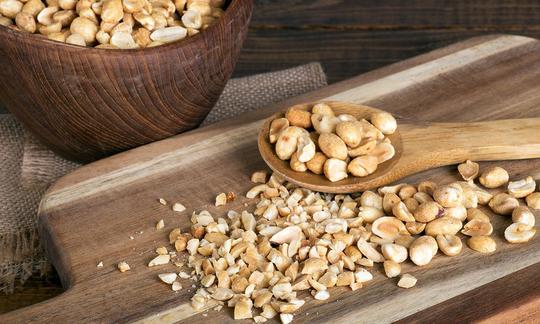


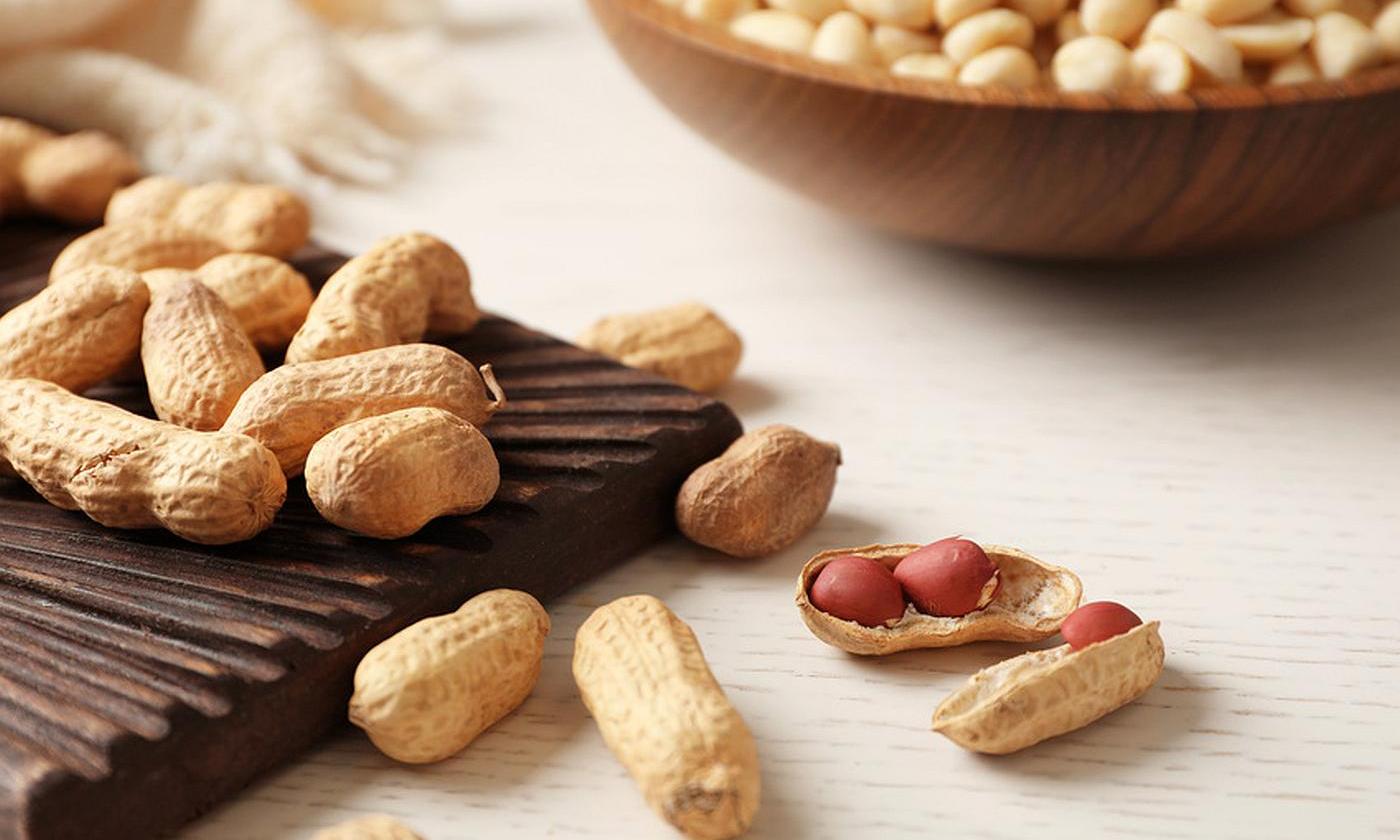
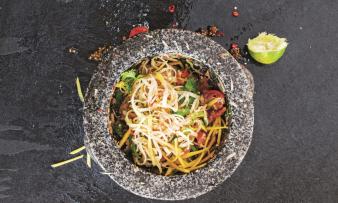
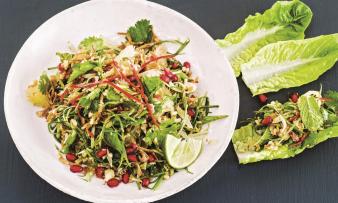
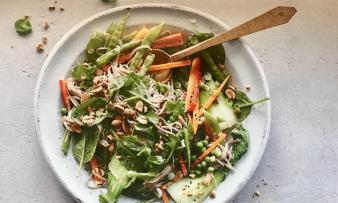


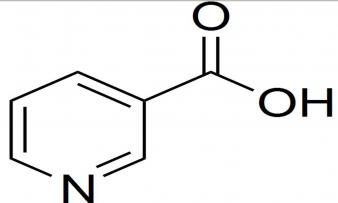


Comments